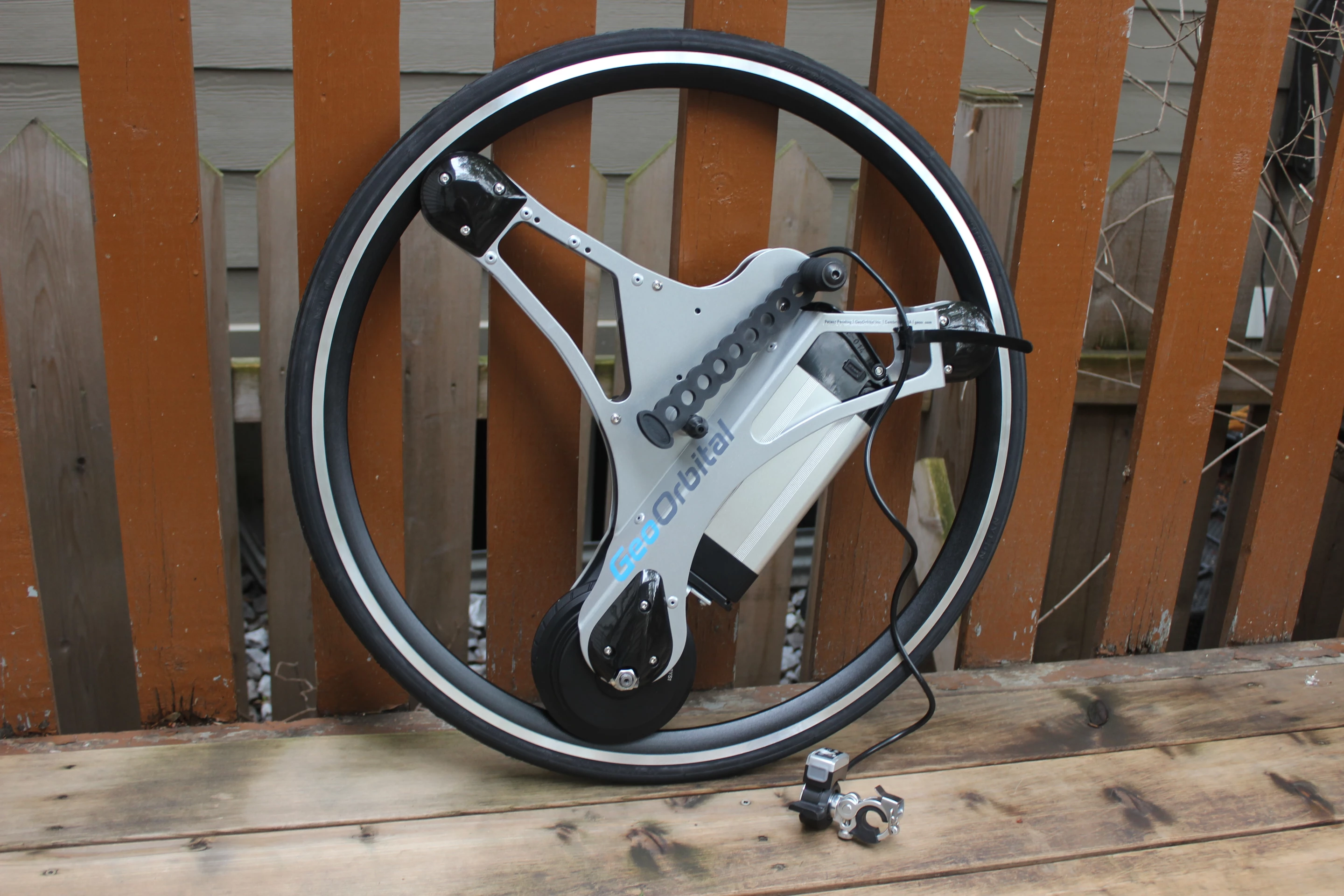Of all the cycling gadgets we've had the chance to test here at New Atlas – and there have been quite a few – the GeoOrbital Wheel has got to be one of the most fascinating. Like the Electron Wheel and the Omni Wheel, it's an electric front wheel that instantly converts your existing bike into an e-bike. Unlike them, however, it looks like it belongs in the upcoming Blade Runner sequel. That said, is it really the electric wheel of the future?
The GeoOrbital Wheel actually owes its existence to another sci-fi classic – Tron. Inventor Michael Burtov was inspired by the light cycles in that film, which feature what are known as centerless wheels. This means that they have no hub or spokes, instead consisting of a rim and tire that revolve around an empty space in the middle.
In the case of the GeoOrbital Wheel, though, that empty space is partially occupied by a non-rotating module that contains the 500-watt brushless motor, the removable Panasonic li-ion battery pack, and the electronics. Three arms reach out from that module to the inside of the rim, each one equipped with a rubber roller at the end. The bottom roller is powered by the motor, causing the rim to rotate around the module.

Because the rollers are constantly pressing against the rim's inner surface, there's no room for a valve stem to be sticking up. As a result, the wheel has to be equipped with a foam-filled tire that doesn't require air. This means that flats aren't an issue, although there is a bit of a revolving weight penalty. Additionally, once the tire's tread wears out, you won't just be able to nip up to your local bike shop to buy a replacement – you'll likely have to order one from GeoOrbital.
Installation is for the most part just a matter of taking your existing front wheel off, putting the GeoOrbital Wheel on, and fastening its hard-wired throttle control to the handlebars. In the case of the bike that we were using, though, there was enough of a difference between the width of its rim and that of the GeoOrbital Wheel, that we also had to readjust the brake cable in order to open the brake to the right width. This means that going back and forth between the two wheels would not just be a matter of opening and closing the brake's quick-release. To be fair, though, we did have the same problem with at least one of the other electric wheels we tested.

Once you're ready to go, it's just a matter of powering the wheel up by turning its included "ignition" key, turning the throttle on by pressing a button on it, then pressing down on its thumb lever for smooth, even acceleration.
A top speed of 20 mph (32 km/h) is possible using nothing but the throttle, and there currently is no proper pedal-assist feature. In other words, when you pedal without the throttle engaged, the motor does not provide power proportional to your pedalling effort. Although the motor does kick in slightly when you initially start pedalling (to help offset the resistance created by the regenerative braking system), using pedal-power alone certainly still does require some effort – certainly more than is required using a regular non-electric front wheel.
A true pedal-assist module is planned as a future upgrade.

As for battery life … on the 700c wheel-size model that we were using, one 4-hour charge of the 10Ah/36V battery is good for a claimed range of 20 miles (32 km). There's also a 26-inch model with a correspondingly smaller 6Ah/36V battery, which gets 12 miles (19 km) on a 3-hour charge. In both cases, the range can be increased if you pedal a bit while simultaneously using the throttle – essentially giving your bike two-wheel drive.
And as for weight … although the 700c model has a claimed weight of 21 lb, it came out at over 22 (10 kg) when we weighed it. Although that sounds like a lot, it is right in the neighborhood of other similar products. And, like those, it does make your bike quite front-heavy, causing it to hit potholes and other road boo-boos pretty darn hard – good thing it's got that no-flat tire. Additionally, when it does take those hits, the battery rattles within its housing more than we would have liked.
All in all, we found the GeoOrbital Wheel to be quite clever and snazzy-looking, but we'd probably wait until the pedal-assist feature arrives before buying one ourselves. It's priced at US$995, which once again may sound like a lot, but is actually decent compared to what else is out there.
Product page: GeoOrbital Wheel








